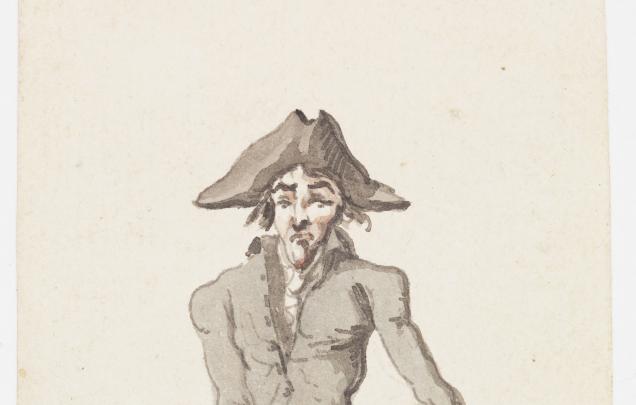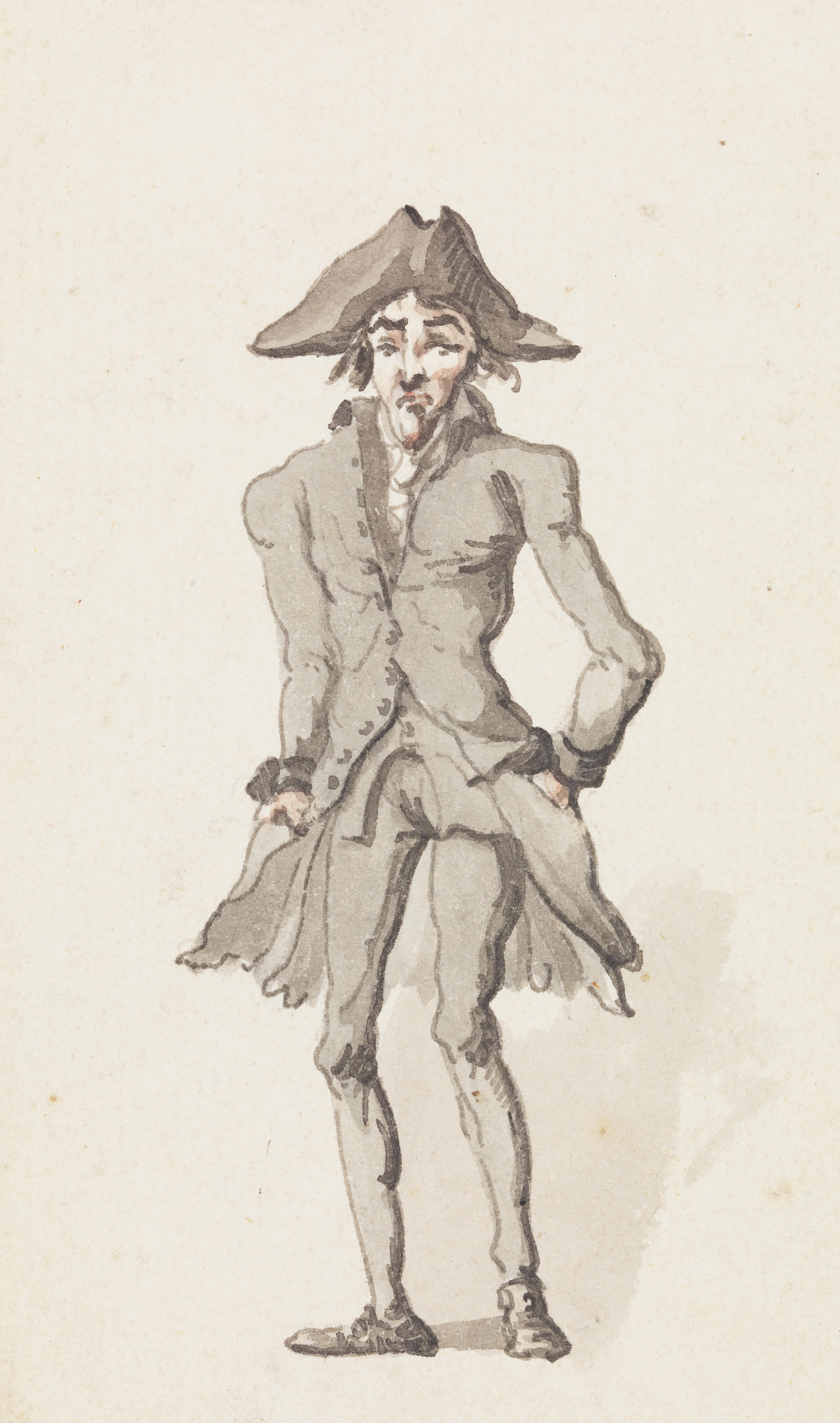Clothes and Crime
Students examine clothing crimes and how some convicts wore clothing as punishment.
This is the student activity 1 of 7 of the Convict clothing learning activity.

Clothes and Crime
Clothing was already valuable in Britain, and some of the convicts had been transported for stealing it. In the new colony where clothing was even more scarce and became even more valuable, so the temptation to steal clothes and fabric would have been huge. Some convicts would even steal from other convicts, but there was a high price to pay.
Look at the image of an Englishman, below. He is not a convict as there are very few images of convicts in the early colony, but a convict would have looked similar to this when they arrived in 1788.
As clothing deteriorated there were few supplies to replace them. Everyone was desperate for clothing. Later, during the famine years, convicts would steal clothes to trade for food due to hunger.
Read Surgeon John White’s notes from June 1788, about a male convict sentenced to hang for:
stealing… some shirts, stockings and combs.
Read Judge David Collins’s journal from November 1789.
A female convict of the name of Ann Davis… was apprehended for stealing… several articles of wearing apparel... she was executed.
Sometimes clothes were issued as a punishment for crimes committed.
Read Judge David Collins’ words from August 1788 about a convict who lied about discovering gold in the colony:
He was afterwards ordered by the magistrates… to receive a hundred lashes, and to wear a canvas frock, with the letter R cut and sewn upon it, to distinguish him more particularly from others as a rogue.
Answer these questions:
- What is a frock?
- What is a rogue?
- Do you think this punishment worked? Why?
Read this story about convict women that Judge David Collins records in December 1788:
[The] women who had received part of the [stolen] property … were immediately apprehended, and one of them made a public example of … she was directed to stand forward, and, her head… deprived of its natural covering, she was clothed with a canvas frock, on which was painted, in large characters, R. S. G. …and threatened with punishment if ever she was seen without it.
Convict William Boggis stole a shirt and in July 1789 was sentenced to 100 lashes. He also had to work with a leg iron and wear a label with the word THIEF attached to his clothing.
Another convict Ann Fowles stole clothing and was sentenced in June 1789 to 50 lashes on three successive Thursdays, her head was also deprived of its natural covering and she wore a canvas cap with the word THIEF on it.
Answer these questions:
- What does R.S.G. stand for? [Answer in Additional Information.]
- Do you think wearing clothes with R.S.G. or THIEF painted on it, an effective form of punishment? Why?
- What does her head… deprived of its natural covering mean? [Answer in Additional Information.]
- Do you think this punishment was effective? Why?
- How would you feel if you were punished in either of these ways?
Design some clothing for convicts to be worn as a punishment.
Consider this:
- What is the purpose of your clothing?
- What colours will you choose?
- What shapes will it be?
- Will there be anything attached?
- How will it be effective?
